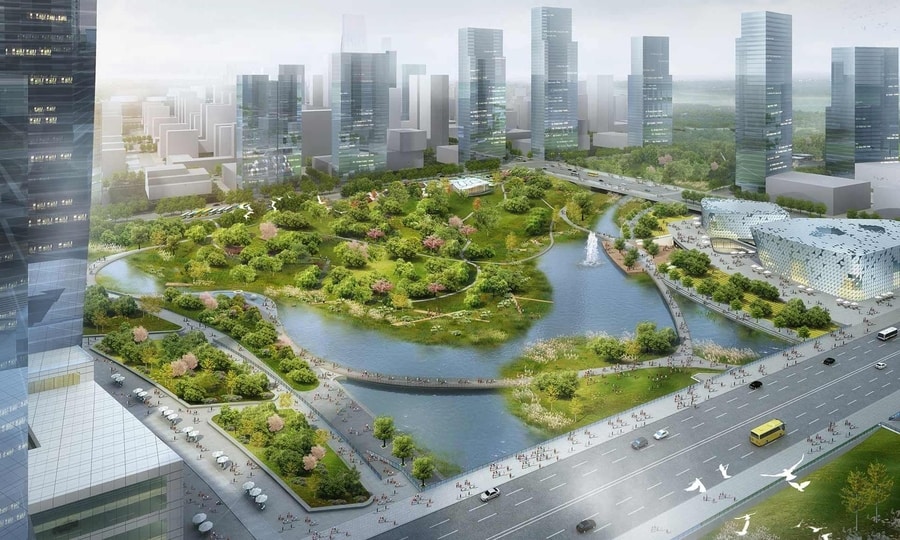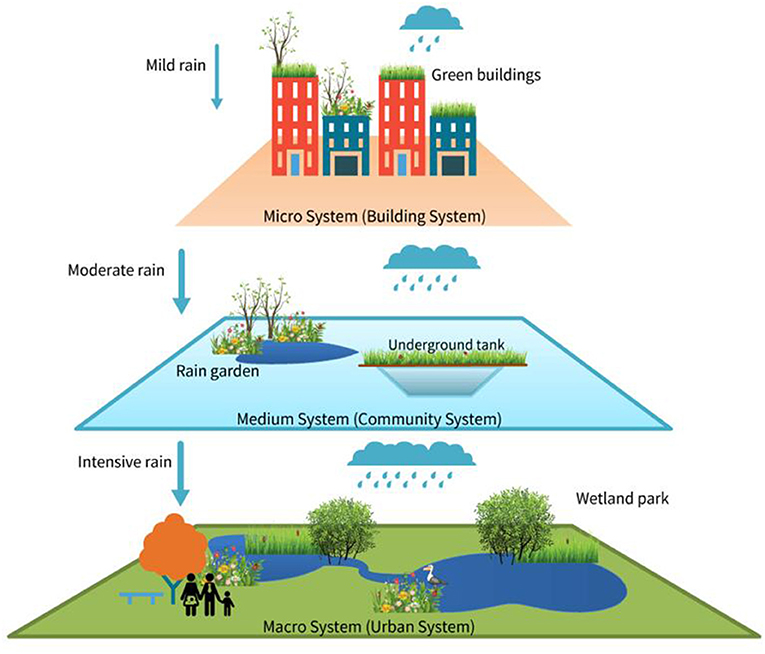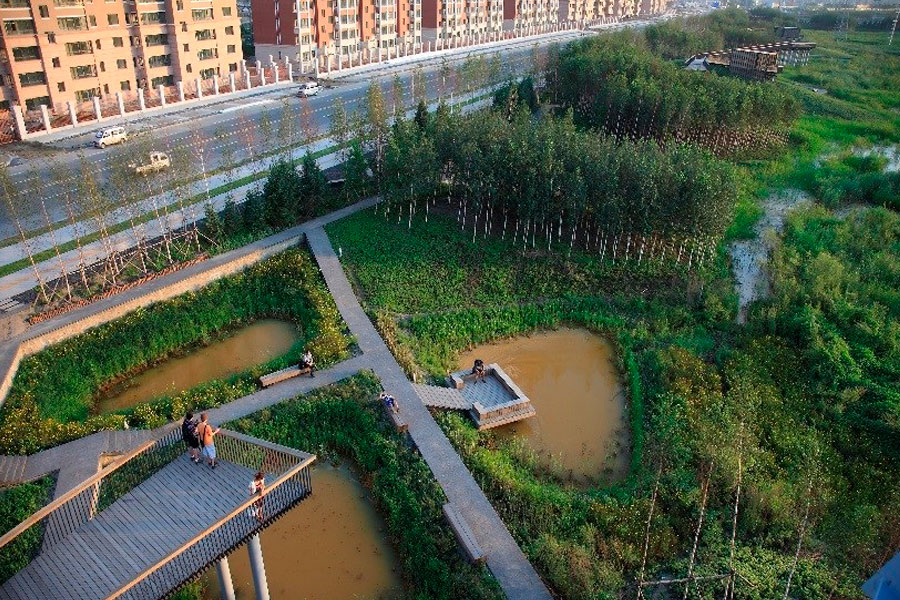 The term sponge city might conjure up a creative image of a city made of sponges, but the actual definition of sponge cities isn’t as literal as it seems.
The term sponge city might conjure up a creative image of a city made of sponges, but the actual definition of sponge cities isn’t as literal as it seems.
Instead, picture a city filled with green spaces and bodies of water. Sounds pretty, doesn’t it?
But these landscapes are more than just a pleasant idea; they actually serve to lessen the consequences of extreme climate events. Let’s read on to find out what a sponge city is…
What is a Sponge City?
Sponge city is a term that originated in China to describe urban spaces that are re-designed with areas for greenery. They absorb stormwater the way a sponge takes up excess water!
 These areas combat flooding naturally by replacing impermeable pavement with porous green spaces. These “sponges” cool cities, filter air pollution and remove contaminants from stormwater before they enter the water table and our drinking water sources.
These areas combat flooding naturally by replacing impermeable pavement with porous green spaces. These “sponges” cool cities, filter air pollution and remove contaminants from stormwater before they enter the water table and our drinking water sources.
Several tools and technologies can be utilized in a sponge city. Employing sustainable methods like covering walls and roofs with plants is one method. Another technique uses swales, or layers of permeable soil covered by greenery that capture rainwater and run-off.
These and other concepts are used throughout the world under different names like green infrastructure, low-impact development, and sensitive urban design. The approach, regardless of the name, focuses on controlling flooding and water pollution.
Why Sponge Cities?
Many cities around the world are suffering from devastating flood events. In recent years, 60% of China’s medium to larger-sized cities have flooded - killing hundreds and displacing more than a million people. In New York City, 13 people were killed in floods during 2021. In 2016, dozens were killed and infrastructure destroyed in Nairobi, Kenya.
Flooding has increased because of the overuse of concrete and asphalt surfaces, called “gray infrastructure”. Landscape architects realized the need to make cities more “spongy” by working with their local climate and natural features to design appropriate solutions. Research shows that sponge areas are roughly 50% cheaper, and 28% more effective than man-made solutions.
Sponge Cities Around the World
 In Philadelphia, a project called “Green City, Clean Waters” was developed after the EPA enforced the federal Clean Water Act there in 2011. To date, the city has “greened” at least 2,200 acres of land and used a mix of solutions like rain gardens, restoring wetlands, and green infrastructure in their plan. They are pursuing their 2036 goal of decreasing the amount of runoff and rainwater throughout the city by 85%.
In Philadelphia, a project called “Green City, Clean Waters” was developed after the EPA enforced the federal Clean Water Act there in 2011. To date, the city has “greened” at least 2,200 acres of land and used a mix of solutions like rain gardens, restoring wetlands, and green infrastructure in their plan. They are pursuing their 2036 goal of decreasing the amount of runoff and rainwater throughout the city by 85%.
Berlin has also utilized the sponge approach to ensure that polluted stormwater doesn’t enter the city's drinking water, which is sourced from groundwater within the city’s limits.
Although their efficacy is proven, implementing sponge plans is often difficult because policymakers often need to be convinced to enact them. Despite this, cities around the world are thriving after the use of the Sponge City approach.
Switching to a sponge city design may serve to be highly beneficial in a long-term context, as it uses the resources nature already provides us with. This is a great solution that can, and already has, made a huge impact in preventing the negative changes to our climate. Expanding this solution to many other urban areas throughout the world can create a better environment and help reach climate goals sooner!
Sources: NPR, NY Times, Euronews, UNFCCC, TheUrbanist,.org






